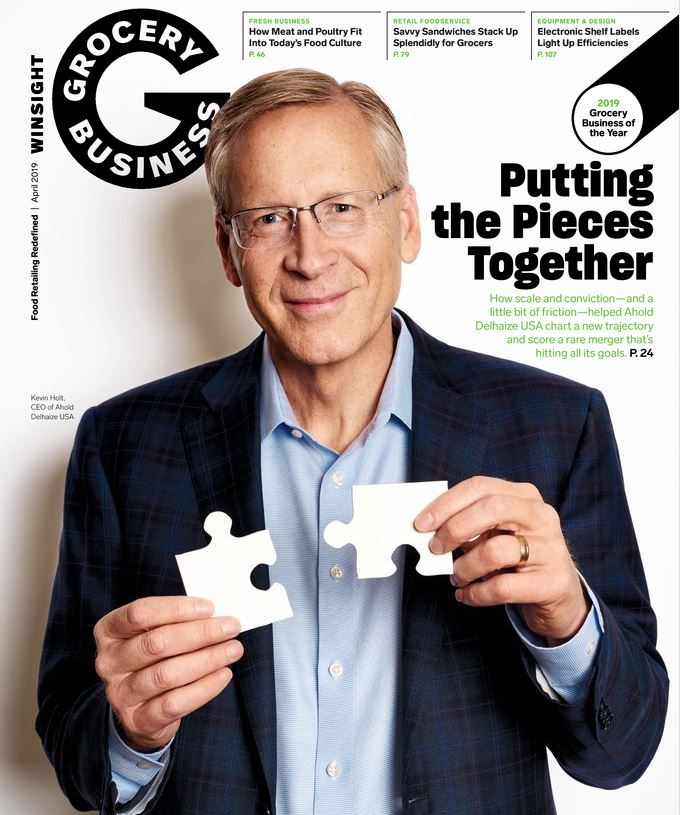Retailers have more tools at their disposal than ever before to help ensure their shoppers’ safety. Supply chain compliance management has long been a term that strikes dread into grocers, imparting images of stacks of paperwork coupled with the nagging fear of a preventable foodborne-illness outbreak.
As Randy Fields, chairman and CEO of Park City Group, parent company of Murray, Utah-based compliance management enforcement company ReposiTrak, describes it, compliance is a “paper-intensive, people-intensive, process-intensive issue for retailers” that has not been executed as well as it should have been over the past 25 years.
Fields says retailers’ concerns about supply chain safety are “well-founded” in light of ReposiTrak data that finds more than 50% of suppliers are not on its system, nor do they have appropriate insurance coverage, which he says leaves them “naked along with the retailer.”
With the typical retailer having somewhere between 1,000 and 2,000 vendors to keep track of, and about 30 pieces of paperwork for each compliance standard, this can add up to tens of thousands of pieces of paperwork each year, which can be a daunting task that must be backed by considerable resources, Fields says.
However, as food safety standards become stricter and foodborne illness becomes a more pressing problem, compliance management procedures are conversely getting easier and more approachable, as well as being more effective and affordable, with new technologies and platforms that can help trading partners focus on strategies and solutions rather than put out fires that could have been prevented in the first place.
Dispatching ‘Professional Naggers’
Fewer than 17% of suppliers respond to requests for paperwork on the first try, according to insights from ReposiTrak, which Fields says is a phenomenon that can significantly belabor the supply chain compliance management process. “That makes it costly. It’s administratively difficult because suppliers just don’t willingly give you the information,” he says. “You have to nag them to get it.”
To help mitigate this problem, ReposiTrak has a “success team” that Fields affectionately refers to as a “team of professional naggers” who follow up with suppliers for paperwork and documentation to input into its master system. The process has encouraged compliance among suppliers, Fields says, because if they don’t provide the correct documentation or live up to retailers’ standards, they will not be in the system and will lose retail customers.
Fields says his team will “hunt you down to the end of the earth to get you compliant with your customers.”
It’s not like it’s a breakthrough; we’re just asking you to do what you’ve been asked to do for 25 years,” he says.
New Kids on the Blockchain
Blockchain technology may sound intimidating or downright confusing, but it has the potential to completely streamline the supply chain and provide a whole new level of transparency. Grocers, however, have been slow to the uptake of the burgeoning opportunity.
Randy Evins, senior principal for food, drug and convenience for Newtown Square, Pa.-based software company SAP, says blockchain provides grocers with an “immutable record and constant real-time insight into their supply chain,” resulting in the ability to monitor goods as they are traveling from farm to consumers, to “ensure that quality is maintained throughout the entire process,” he says.
This up-and-coming technology helps eliminate the risk of spoilage and bacteria and also helps grocers ensure their shelves are consistently stocked. Using internet of things sensors and devices that are hooked up to packaging and trucks across the supply chain, grocers can receive realtime data including temperature and shipment time.
“The concept of blockchain-the very precise tracking of information-will have a major impact on the supply chain,” says Evins, and that it is a “connected business process that can scale real time and provide incredible, instantaneous access to information that will change the game.”
Evins encourages grocers to adopt the new technology, which he says has the power to help them advance their business capabilities while ensuring the food that is available on the supermarket shelf is safe for consumer consumption. Doing so, he says, should be food retailers’ “top priority. Grocers should implement proactive vs. reactive strategies to ensure that risk does not become reality.”
Expecting the Best, Preparing for the Worst
While retailers can go to the ends of the earth to ensure supply chain compliance, accidents do happen, and it’s crucial for trading partners to be prepared to react quickly in the case of a recall or safety concern.
For example, Patty McDonald, global solution marketing director for Dallas-based Symphony RetailAI, points to the E.coli outbreak in romaine lettuce last year, which she says could not have been prevented in the supply chain, leaving it largely up to retailers to ensure contaminated items were promptly pulled from shelves.
The U.S. Food and Drug Administration currently requires produce to be tagged with labels that clearly display the point of origin to help isolate contaminated product. “But for grocers to quickly react and pull goods from the shelf requires more than that-they need a system in place to understand where goods are in the supply chain,” McDonald says. This not only includes a strong supply chain tracking and compliance system but also the need for retailers to check for expired dates, bad product shipments and quality controls on their own shelves. Tampering and packaging issues can also occur, which prompts McDonald to point out that an end-to-end view of the entire supply chain is critical in enabling quick and efficient responses.

